Dam Deformation Interpretation and Prediction Based on a Long Short-Term Memory Model Coupled with an Attention Mechanism
Abstract
:1. Introduction
- This paper proposed and tested a DBSCAN method to filter the dam deformation time series data. The method effectively removed the equipment based abnormal values caused by environmental factors or equipment failures, thereby smoothing the random measurement errors in the observed data, which improved prediction accuracy.
- The importance of input variables to the dam deformation prediction model was analyzed to interpret and evaluate the model. This resulted in a useful and efficient qualitative measure of dam deformation, which improved prevention and control of abnormal structural responses.
- A coupled model was developed to better address the needs of dam deformation prediction. An attention mechanism focuses on the important variables in the short-term time dimension, while the LSTM model captures long-term change characteristics. This algorithm is very suitable for the prediction of dam deformation by accounting for time lag.
2. Methods
2.1. Modeling Dam Deformation
2.1.1. Hydrostatic Pressure Component
2.1.2. Temperature Component
2.1.3. Time Component
2.2. Density-Based Spatial Clustering of Applications with Noise
| Algorithm 1 Equipment outlier filtering |
| Inputs: Dataset , radius ε, domain density threshold MinPts |
| Outputs: Density-based cluster set |
| Marking k in as UNVISITED, |
| For : |
| If ki is UNVISITED |
| Marking ki as VISITED |
| If x>= MinPts |
| Create a new cluster C and add ki to C to form a list set N |
| For each point ki’ in N |
| If ki’ is UNVISITED |
| Marking ki’ is VISITED |
| If y>= MinPts and each one in y ∉ any cluster |
| Adding them into C |
| End if |
| End if |
| End for |
| Else |
| Marking ki as outlier |
| End if |
| End if |
| End for |
2.3. Variable Importance Measures
| Algorithm 2 Variable importance measure for predictive model interpretation |
| Inputs: Observed dataset , |
| Outputs: Variable relative importance |
| Divide X into sets of tensors, |
| For : |
| End for |
| For : |
| End for |
2.4. Long Short-Term Memory Networks Couple with Attention
3. Model Implementation
3.1. Selection of Input Variables
3.2. Design of Comparison Schemes and Tuning Parameters
3.3. Evaluation Criteria
4. Case Study
4.1. Case Description
4.2. Data Analysis
5. Results and Discussions
5.1. Importance of Input Variables and Model Interpretation
5.2. Performance of Prediction Accuracy and Interpretation in Time Dimension
6. Conclusions
- The results showed that the DBSCAN method is suitable for the detection of equipment based abnormal values. The processed data had an average value that was similar to that of the original data, but the variance and random errors were greatly reduced.
- The RF model identified the most important variables needed to provide a reasonable explanation for dam deformation to be input into the model. The results revealed that the temperature was a particularly important factor in dam deformation, the importance of which was more than 50%, followed by water level, while the time component had the weakest influence.
- The time-lag effect in dam monitoring plays an important role in predicting dam de-formation. When the model contained a time sliding window, the accuracy of the results was significantly improved, the residual distribution was relatively concentrated, and the outliers were greatly reduced.
- The addition of the attention mechanism enabled the model to focus on important factors in the time dimension and improved the prediction of extreme values. The attention mechanism should be added before the LSTM layer to prevent the high-dimensional mapping of data processed by the LSTM layer from causing attention disorder.
Author Contributions
Funding
Institutional Review Board Statement
Informed Consent Statement
Data Availability Statement
Acknowledgments
Conflicts of Interest
References
- Cao, E.; Bao, T.; Gu, C.; Li, H.; Liu, Y.; Hu, S. A Novel Hybrid Decomposition—Ensemble Prediction Model for Dam Deformation. Appl. Sci. 2020, 10, 5700. [Google Scholar] [CrossRef]
- Lin, C.; Li, T.; Chen, S.; Liu, X.; Lin, C.; Liang, S. Gaussian process regression-based forecasting model of dam deformation. Neural Comput. Appl. 2019, 31, 8503–8518. [Google Scholar] [CrossRef]
- Willm, G.; Beaujoint, N. Les méthodes de surveillance des barrages au service de la production hydraulique d’Electricité de France, problèmes anciens et solutions nouvelles (The methods of surveillance of dams to serve hydraulic Production at Élec-tricité de France: Old problems and new solutions), Q34/R30. In Proceedings of the 9th International Congress on Large Dams (ICOLD), Istanbul, Turkey, 4–8 September 1967. [Google Scholar]
- Penot, I.; Daumas, B.; Fabre, J.P. Monitoring behaviour. Water Power Dam. Const. 2005, 57, 24–27. [Google Scholar]
- Mata, J.; Tavares de Castro, A.; Sá da Costa, J. Constructing statistical models for arch dam deformation. Struct. Control Health Monit. 2014, 21, 423–437. [Google Scholar] [CrossRef] [Green Version]
- Popovici, A.; Ilinca, C.; Ayvaz, T. The performance of the neural networks to model some response parameters of a buttress dam to environment actions. In Proceedings of the 9th ICOLD European Club Symposium, Venice, Italy, 10–12 April 2013. [Google Scholar]
- Mata, J. Interpretation of concrete dam behaviour with artificial neural network and multiple linear regression models. Eng. Struct. 2011, 33, 903–910. [Google Scholar] [CrossRef]
- Kao, C.Y.; Loh, C.H. Monitoring of long-term static deformation data of Fei-Tsui arch dam using artificial neural network-based approaches. Struct. Control Health Monit. 2013, 20, 282–303. [Google Scholar] [CrossRef]
- Ranković, V.; Grujović, N.; Divac, D.; Milivojević, N. Development of support vector regression identification model for pre-diction of dam structural behaviour. Struct. Saf. 2014, 48, 33–39. [Google Scholar] [CrossRef]
- Kang, F.; Li, J. Displacement Model for Concrete Dam Safety Monitoring via Gaussian Process Regression Considering Extreme Air Temperature. J. Struct. Eng. 2020, 146, 5019001. [Google Scholar] [CrossRef]
- Ren, Q.; Li, M.; Song, L.; Liu, H. An optimized combination prediction model for concrete dam deformation considering quantitative evaluation and hysteresis correction. Adv. Eng. Inform. 2020, 46, 101154. [Google Scholar] [CrossRef]
- Su, H.; Li, X.; Yang, B.; Wen, Z. Wavelet support vector machine-based prediction model of dam deformation. Mech. Syst. Signal Process. 2018, 110, 412–427. [Google Scholar] [CrossRef]
- Li, Y.; Bao, T.; Shu, X.; Chen, Z.; Gao, Z.; Zhang, K. A Hybrid Model Integrating Principal Component Analysis, Fuzzy C-Means, and Gaussian Process Regression for Dam Deformation Prediction. Arab. J. Sci. Eng. 2021, 46, 4293–4306. [Google Scholar] [CrossRef]
- Ren, Y.; Zhu, C.; Xiao, S. Small Object Detection in Optical Remote Sensing Images via Modified Faster R-CNN. Appl. Sci. 2018, 8, 813. [Google Scholar] [CrossRef] [Green Version]
- van der Burgh, H.K.; Schmidt, R.; Westeneng, H.-J.; de Reus, M.A.; Berg, L.H.V.D.; Heuvel, M.P.V.D. Deep learning predictions of survival based on MRI in amyotrophic lateral sclerosis. NeuroImage Clin. 2017, 13, 361–369. [Google Scholar] [CrossRef]
- Bello-Cerezo, R.; Bianconi, F.; Di Maria, F.; Napoletano, P.; Smeraldi, F. Comparative Evaluation of Hand-Crafted Image Descriptors vs. Off-the-Shelf CNN-Based Features for Colour Texture Classification under Ideal and Realistic Conditions. Appl. Sci. 2019, 9, 738. [Google Scholar] [CrossRef] [Green Version]
- Gelly, G.; Gauvain, J.-L. Optimization of RNN-Based Speech Activity Detection. IEEE/ACM Trans. Audio, Speech, Lang. Process. 2017, 26, 646–656. [Google Scholar] [CrossRef]
- Kim, M.J.; Cao, B.; Mau, T.; Wang, J. Speaker-Independent Silent Speech Recognition from Flesh-Point Articulatory Movements Using an LSTM Neural Network. IEEE/ACM Trans. Audio Speech Lang. Process. 2017, 25, 2323–2336. [Google Scholar] [CrossRef]
- Song, E.; Soong, F.K.; Kang, H.-G. Effective Spectral and Excitation Modeling Techniques for LSTM-RNN-Based Speech Synthesis Systems. IEEE/ACM Trans. Audio Speech Lang. Process. 2017, 25, 2152–2161. [Google Scholar] [CrossRef]
- Yuan, X.; Chen, C.; Lei, X.; Yuan, Y.; Adnan, R.M. Monthly runoff forecasting based on LSTM–ALO model. Stoch. Environ. Res. Risk Assess. 2018, 32, 2199–2212. [Google Scholar] [CrossRef]
- Su, Y.; Weng, K.; Lin, C.; Zheng, Z. An Improved Random Forest Model for the Prediction of Dam Displacement. IEEE Access 2021, 9, 9142–9153. [Google Scholar] [CrossRef]
- Liu, Y.; Guan, L.; Hou, C.; Han, H.; Liu, Z.; Sun, Y.; Zheng, M. Wind Power Short-Term Prediction Based on LSTM and Discrete Wavelet Transform. Appl. Sci. 2019, 9, 1108. [Google Scholar] [CrossRef] [Green Version]
- Liu, W.; Pan, J.; Ren, Y.; Wu, Z.; Wang, J. Coupling prediction model for long-term displacements of arch dams based on long short-term memory network. Struct. Control Health Monit. 2020, 27, e2548. [Google Scholar] [CrossRef]
- Qu, X.; Yang, J.; Chang, M. A Deep Learning Model for Concrete Dam Deformation Prediction Based on RS-LSTM. J. Sens. 2019, 2019, 1–14. [Google Scholar] [CrossRef]
- Xu, G.; Jing, Z.; Mao, Y.; Su, X. A Dam Deformation Prediction Model Based on ARIMA-LSTM. In Proceedings of the 2020 IEEE Sixth International Conference on Big Data Computing Service and Applications (BigDataService), Oxford, UK, 3–6 August 2020; Institute of Electrical and Electronics Engineers (IEEE): New York, NY, USA, 2020; pp. 205–211. [Google Scholar]
- Hartley, G.A.; McNeice, G.M.; Stensch, W. Vogt Boundary for Finite Element Arch Dam Analysis. J. Struct. Div. 1974, 100, 51–62. [Google Scholar] [CrossRef]
- Li, Z.Z. Dam Safety Monitoring; China Electric Power Press: Beijing, China, 1997; pp. 216–220. [Google Scholar]
- Zhou, A.; Zhou, S.; Cao, J.; Fan, Y.; Hu, Y. Approaches for scaling DBSCAN algorithm to large spatial databases. J. Comput. Sci. Technol. 2000, 15, 509–526. [Google Scholar] [CrossRef]
- Ester, M.; Kriegel, H.P.; Sander, J.; Xu, X. A Density-Based Algorithm for Discovering Clusters in Large Spatial Databases with Noise. In Proceedings of the 2nd International Conference on Knowledge Discovery and Data Mining KDD-96, Portland, OR, USA, 2–4 August 1996; pp. 226–231. [Google Scholar]
- Ester, M.; Kriegel, H.P.; Sander, J.; Xu, X. Clustering for mining in large spatial databases. KI J. 1998, 12, 18–24. [Google Scholar]
- Bergstra, J.; Bengio, Y. Random search for hyper-parameter optimization. J. Mach. Learn. Res. 2012, 13, 281–305. [Google Scholar]
- Breiman, L. Random forests. Mach. Learn. 2001, 45, 5–32. [Google Scholar] [CrossRef] [Green Version]
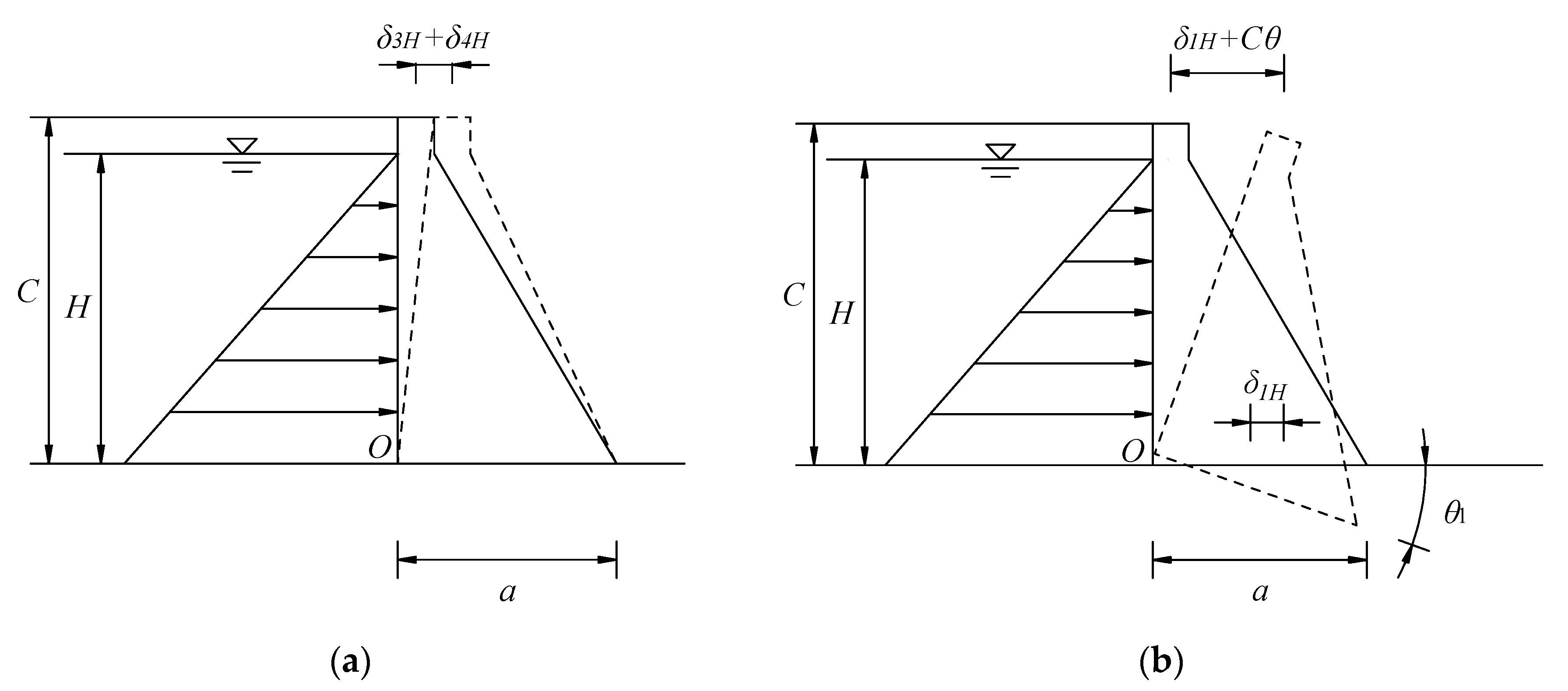
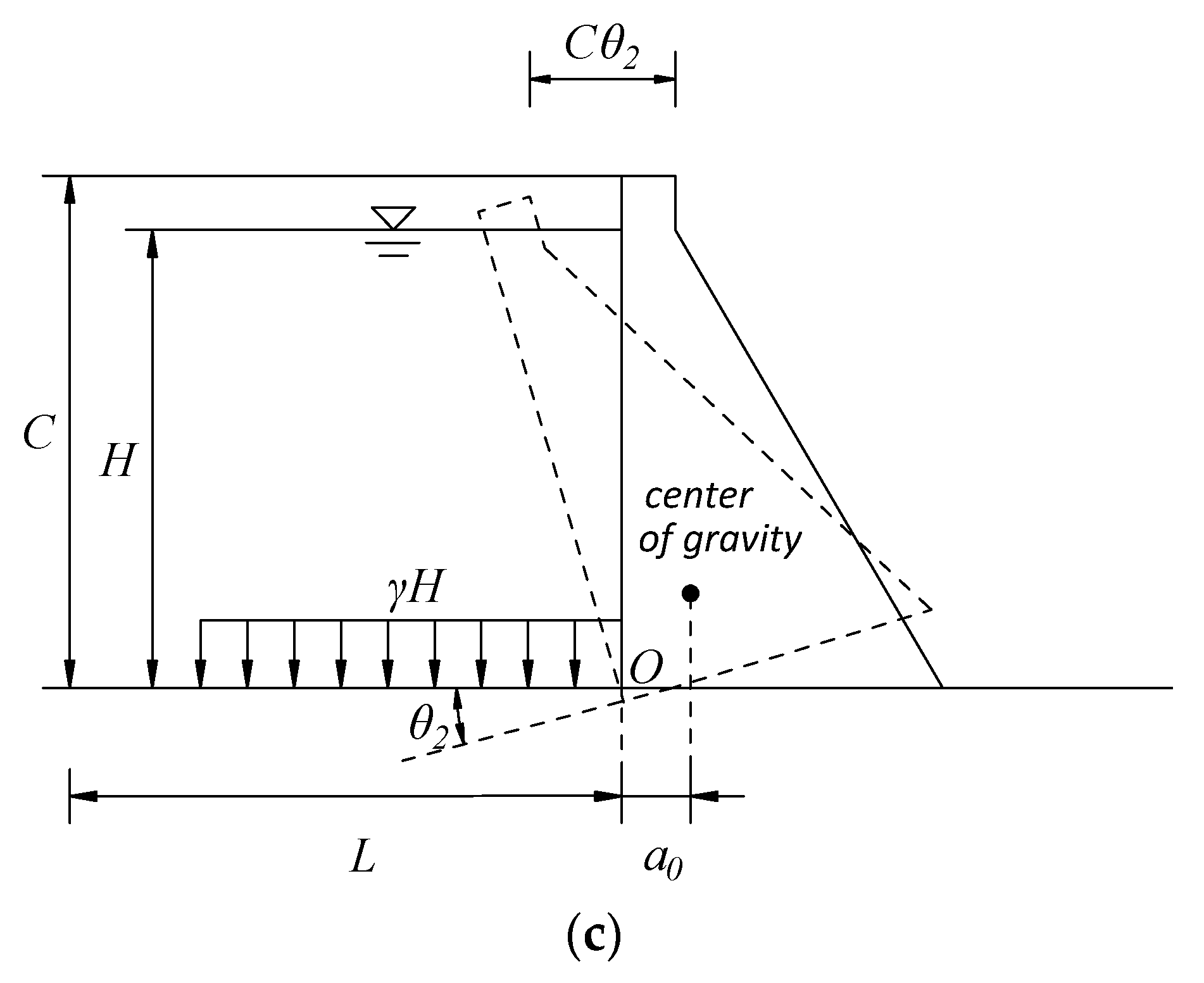
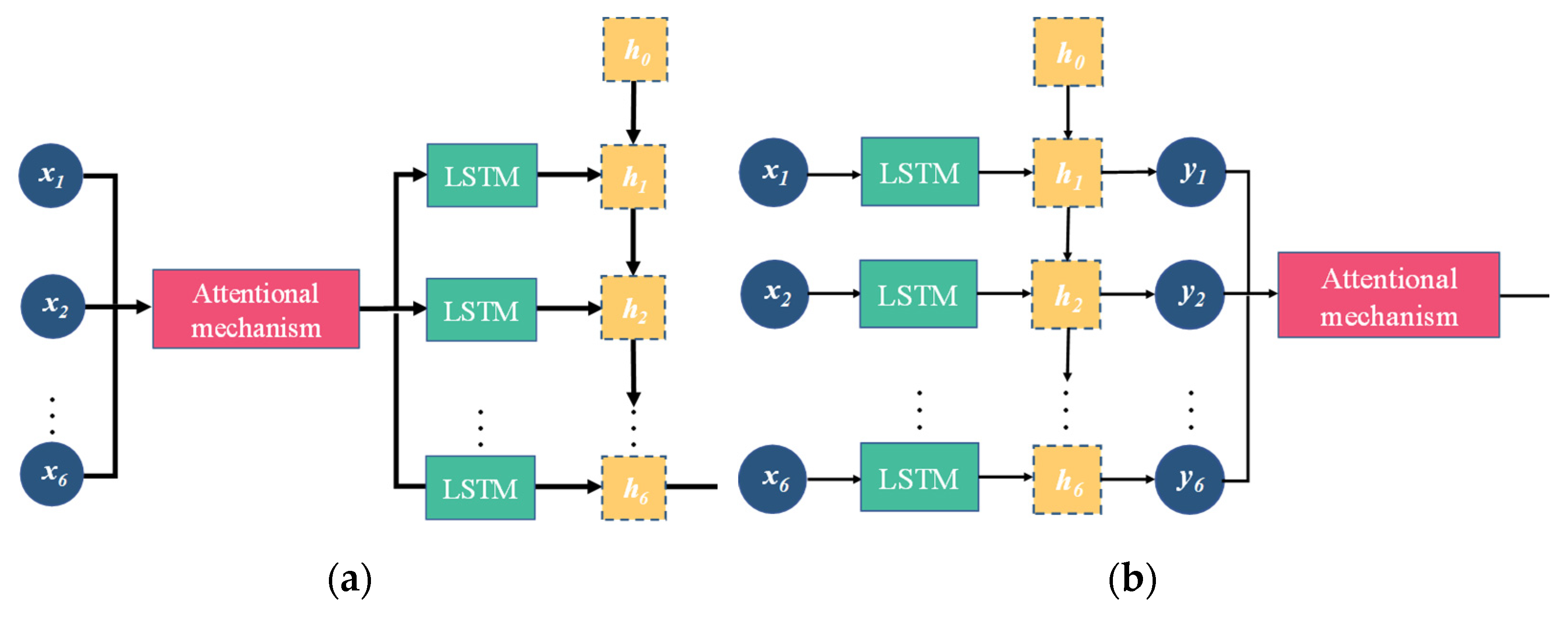
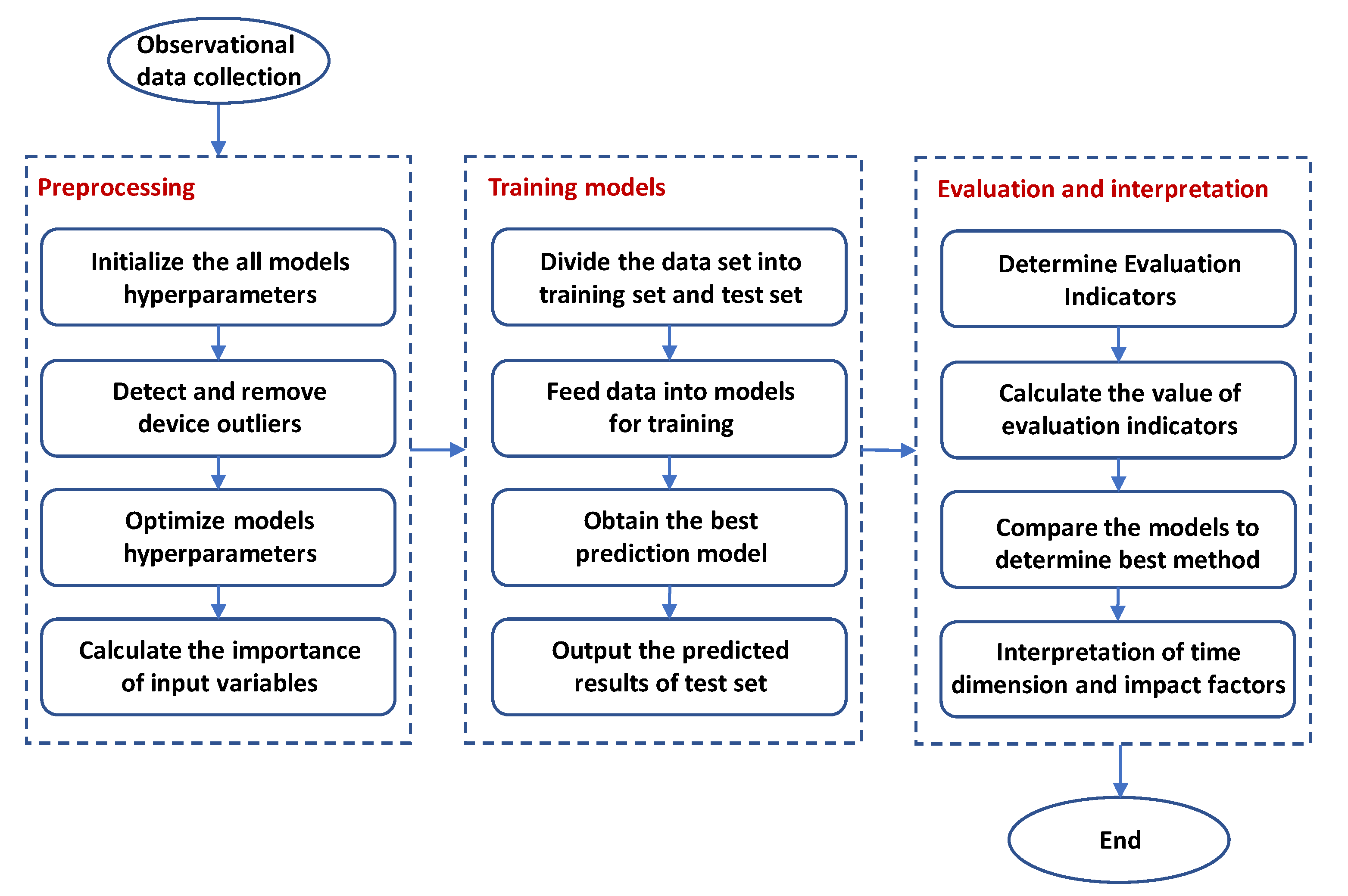

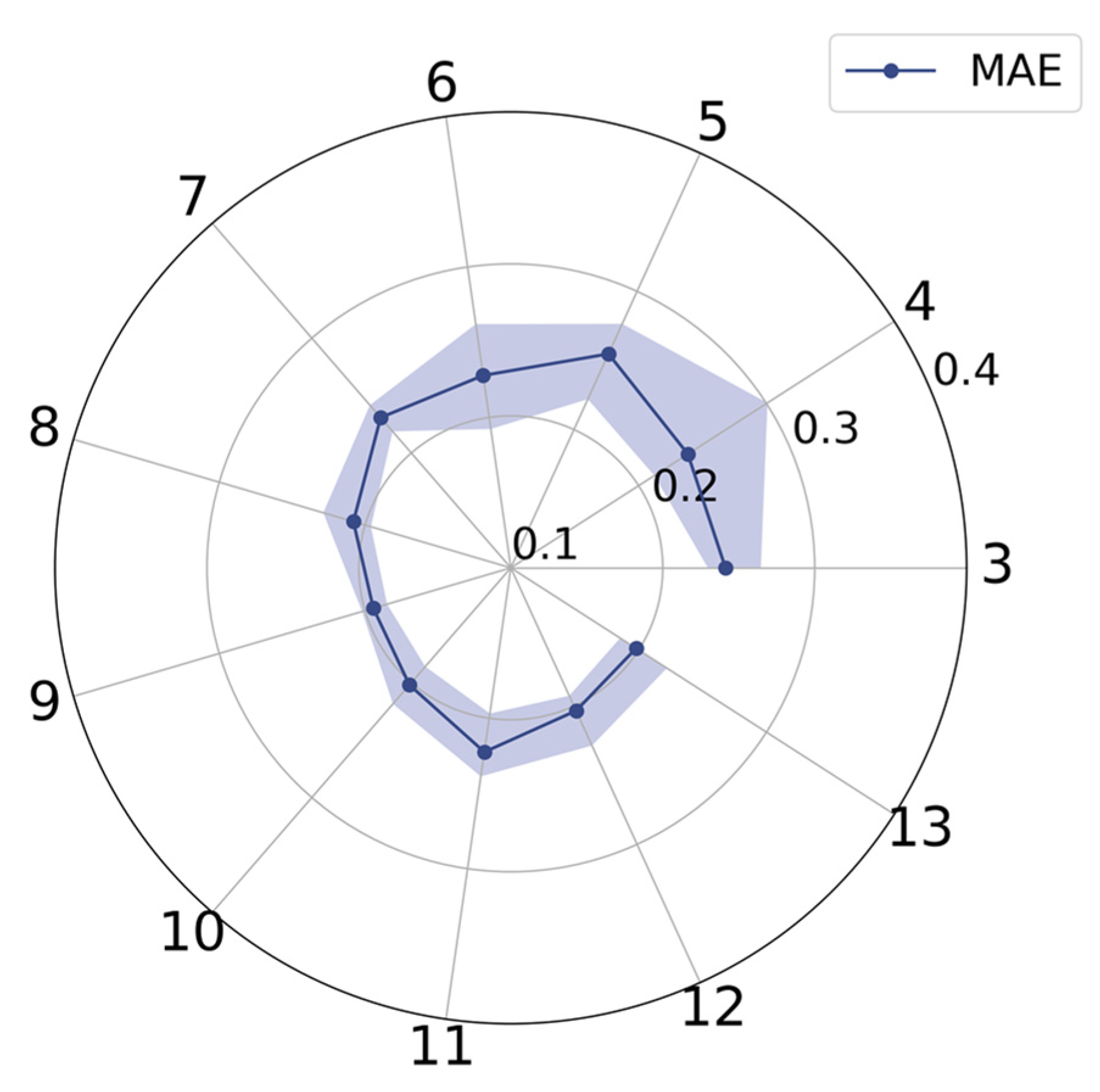

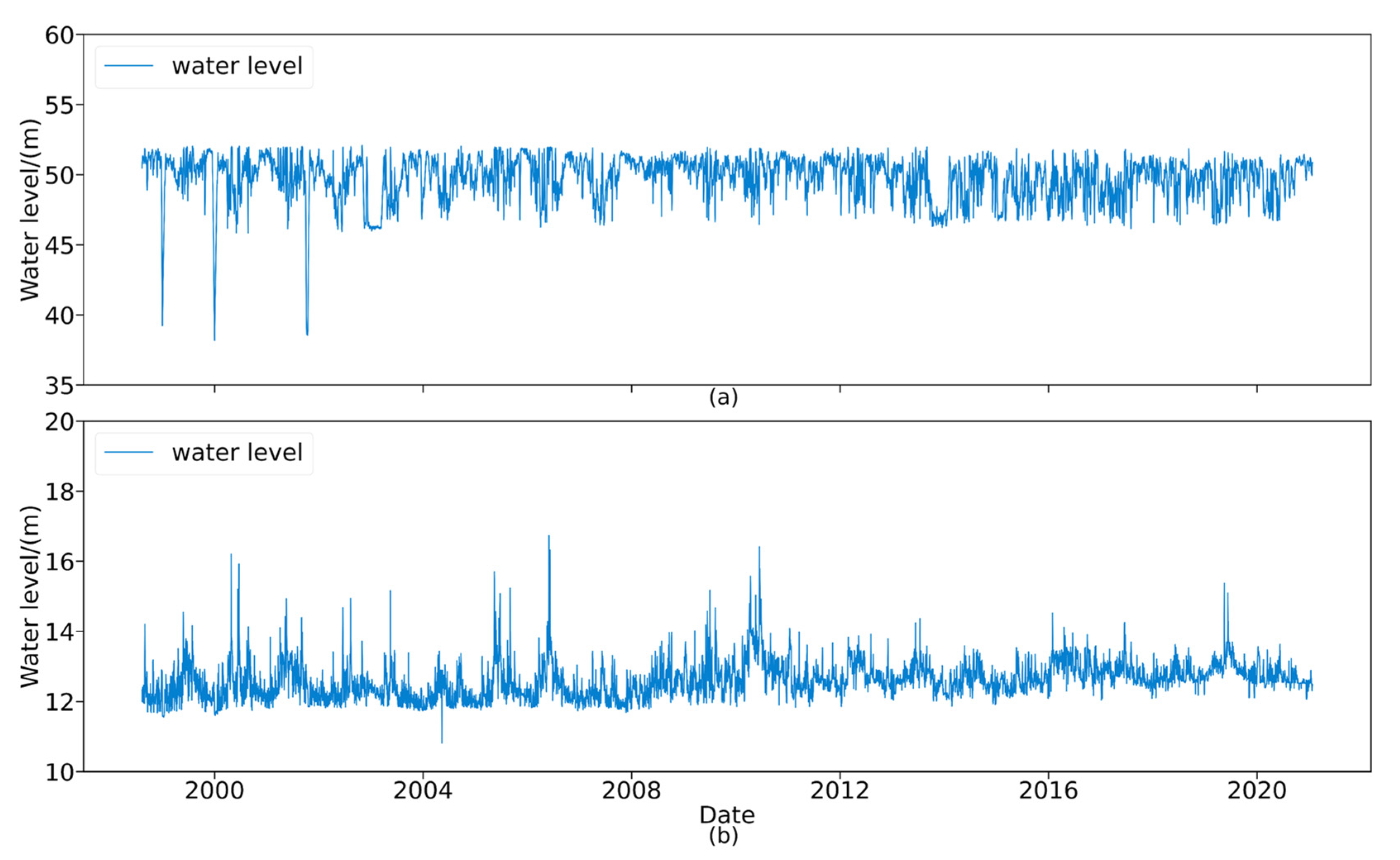
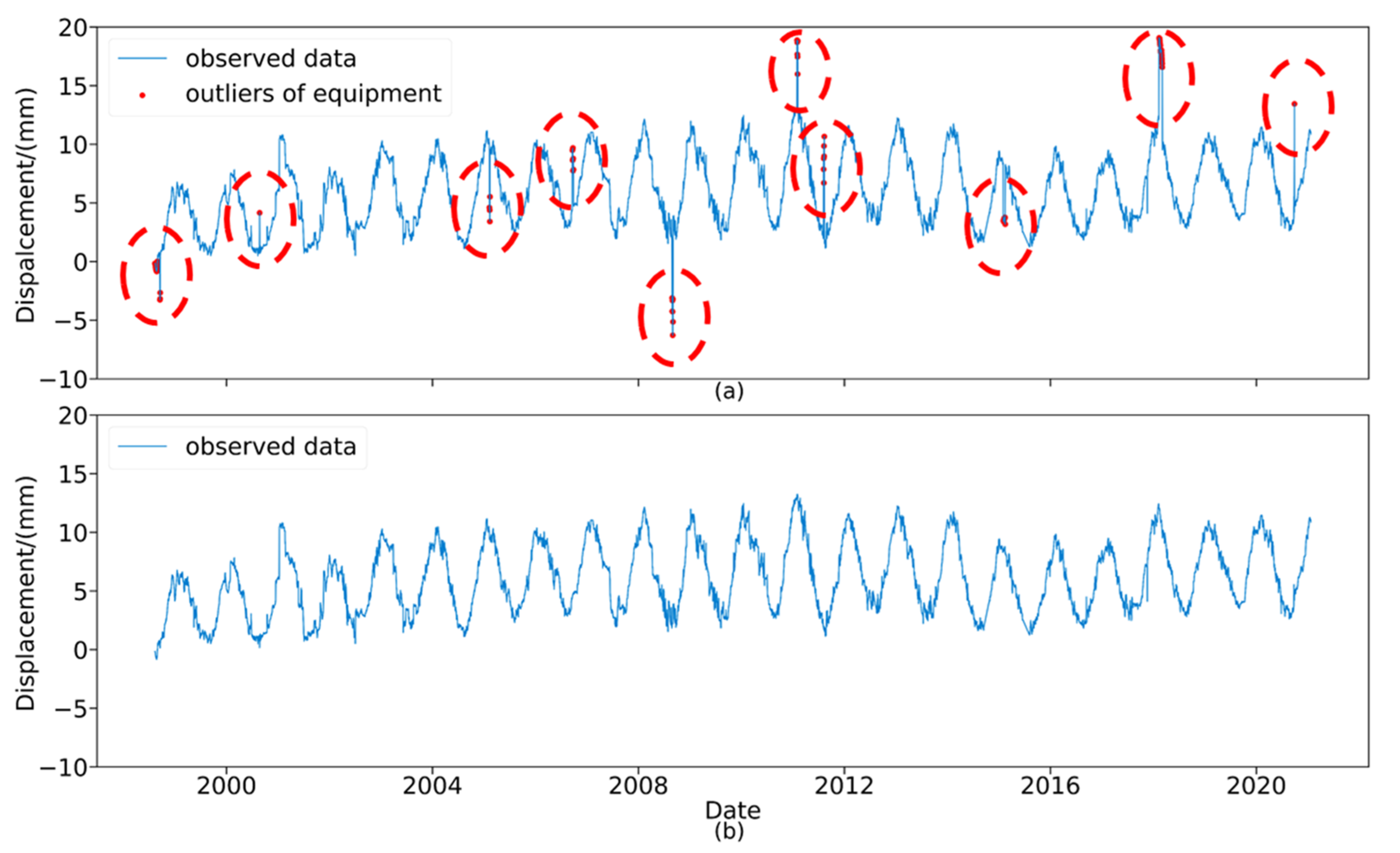
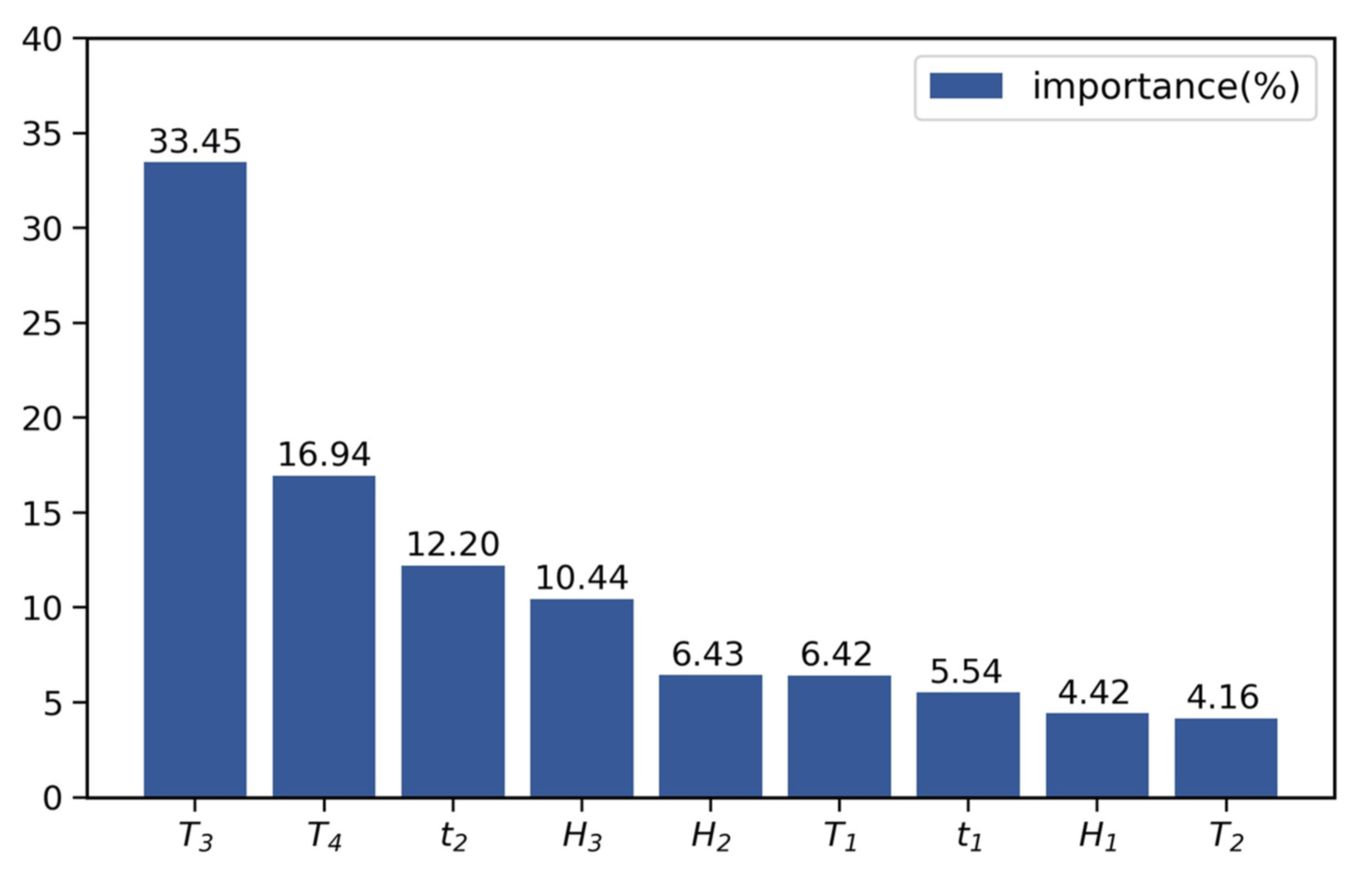
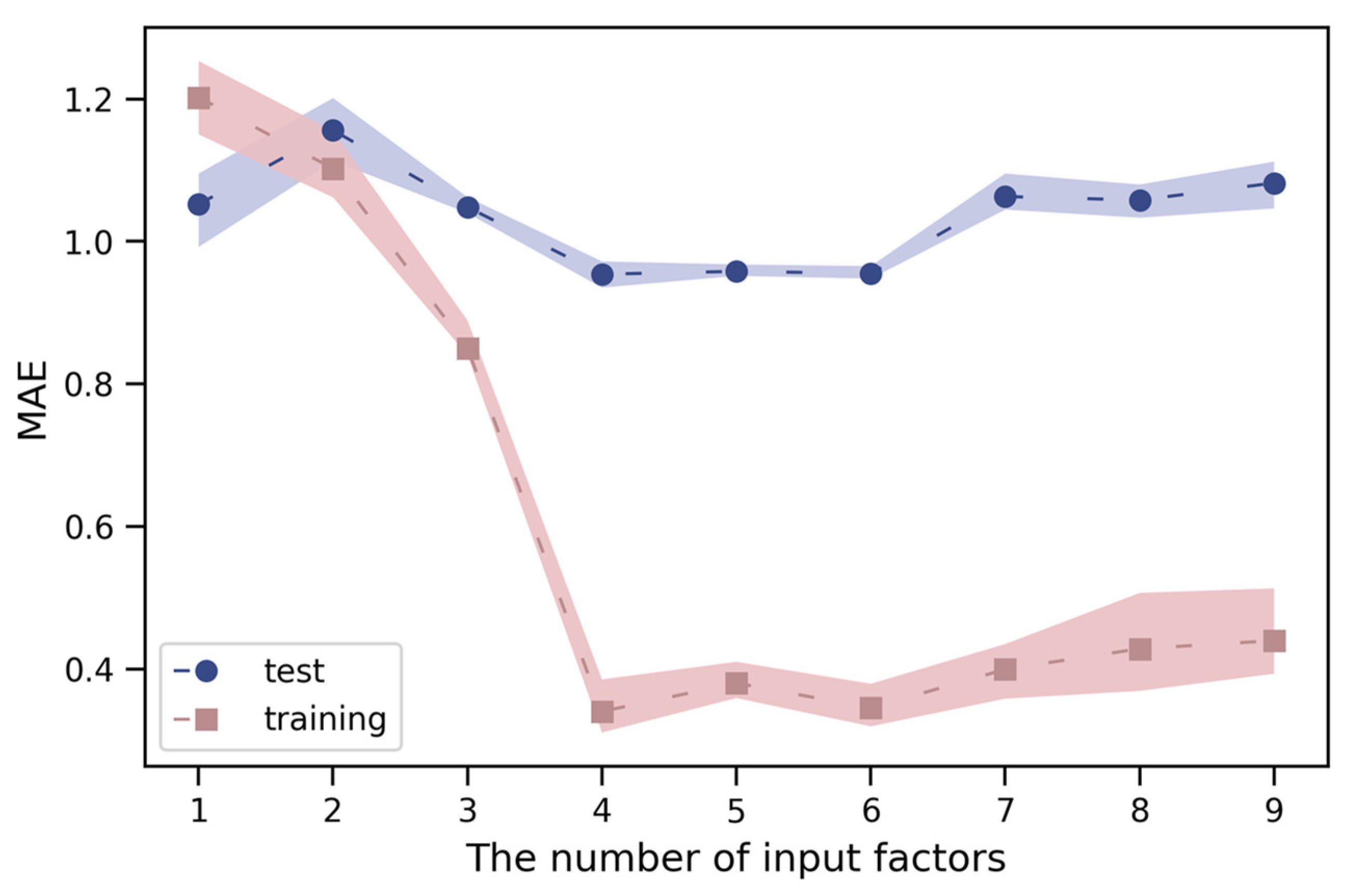
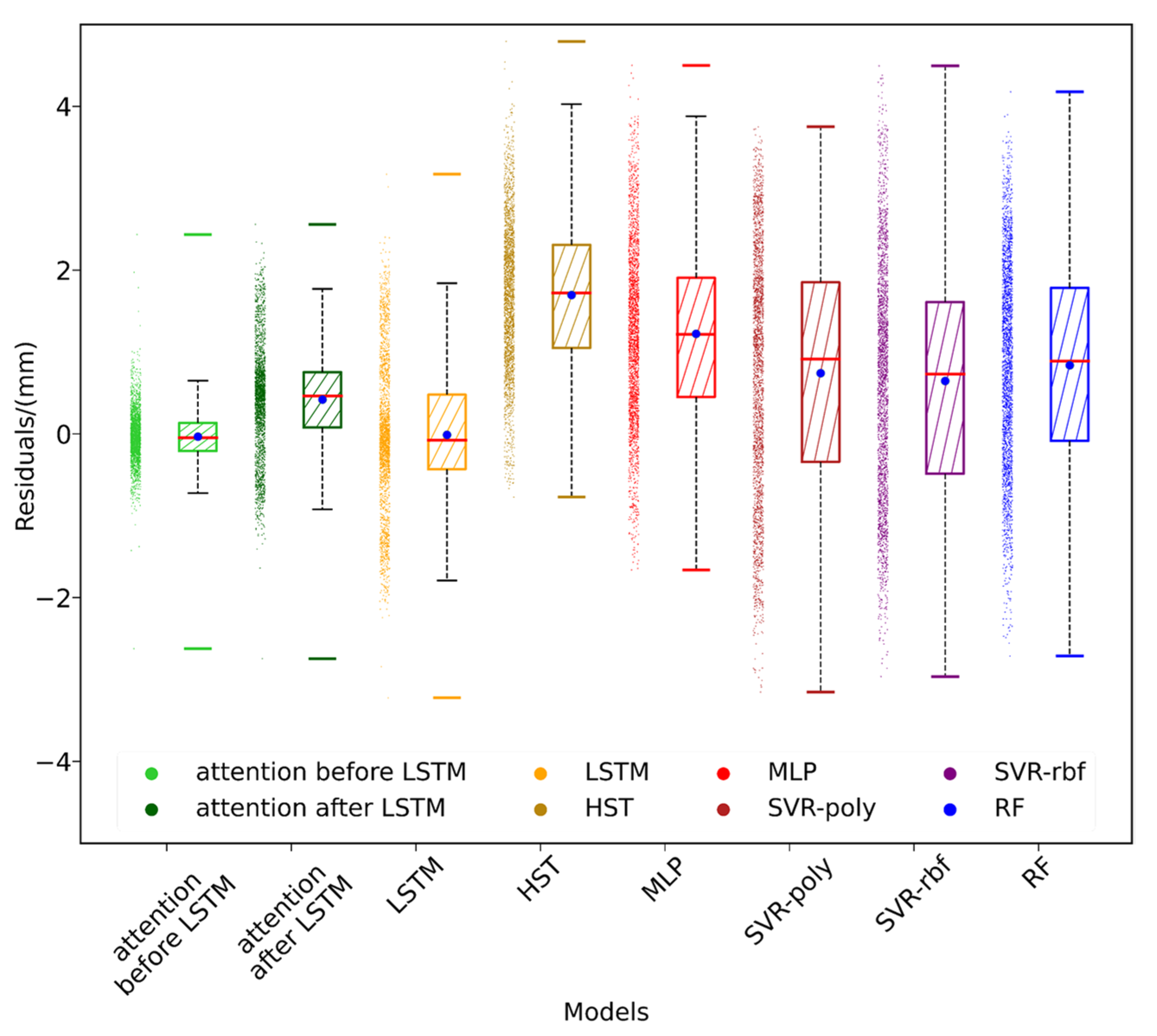
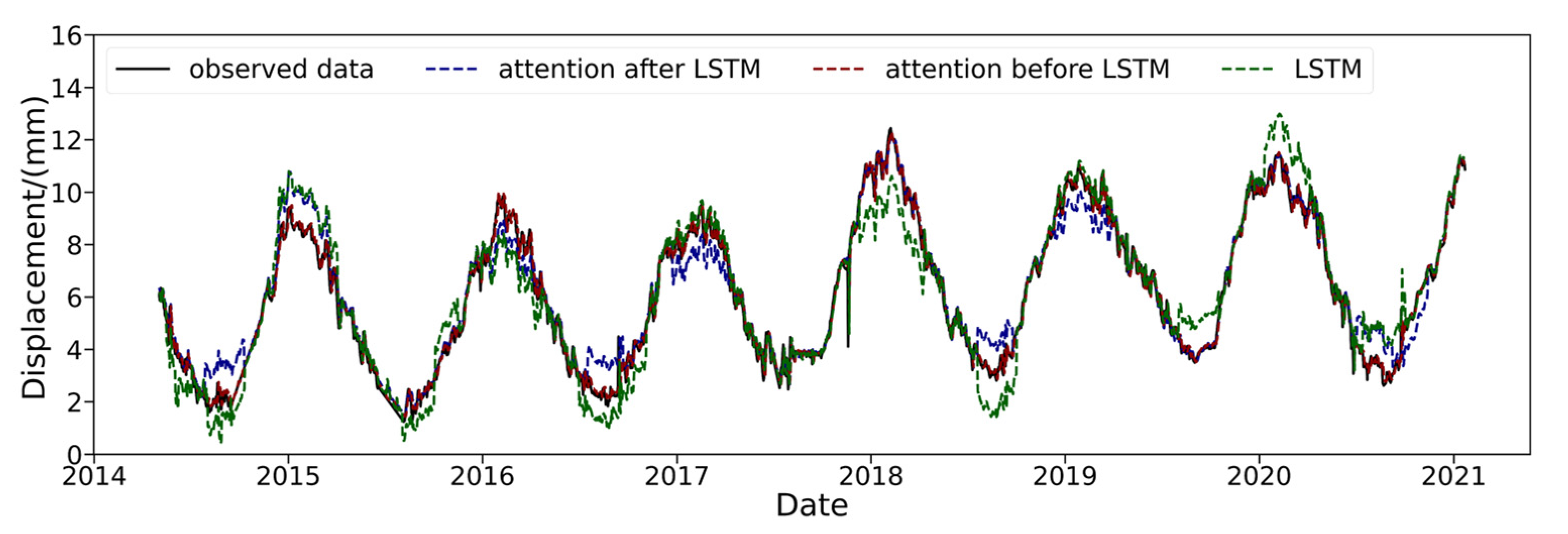


| Models | Hyperparameters | Search Range | Optimal Value | Training: MAE | Test: MAE |
|---|---|---|---|---|---|
| SVM-poly | C | (15, 30) | 21 | 1.5504 | 1.3880 |
| d | [1,2,3,4,5] | 1 | |||
| SVM-rbf | C | (15, 25) | 20 | 0.5598 | 1.2799 |
| γ | (0.1, 0.5) | 0.2 | |||
| RF | n_estimators | (25, 40) | 29 | 0.3987 | 1.2282 |
| max_features | (0,1) | 0.5 | |||
| min_sample_leaf | [1,2,3,4,5] | 3 | |||
| MLP | u | [64, 512] | 128 | 0.6561 | 1.3364 |
| Dropout rate | [0.4–0.8] | 0.5 | |||
| LSTM | u | (64, 521) | 256 | 0.1752 | 0.2037 |
| Dropout rate | [0.4–0.8] | 0.5 | |||
| w | [3, 15] | 9 |
| Attribute | The Original Data | The Data Processed through DBSCAN |
|---|---|---|
| Max | 19.0791 | 13.2493 |
| Min | −6.2839 | −0.8423 |
| Mean | 5.9806 | 6.0159 |
| Median | 5.7828 | 5.7860 |
| Standard | 3.0866 | 2.8342 |
| Serial Number | Search Range | MAE | |||||||||
|---|---|---|---|---|---|---|---|---|---|---|---|
| T3 | T4 | t2 | H3 | H2 | T1 | t1 | H1 | T2 | Training | Test | |
| 1 | √ | 1.2022 | 1.0520 | ||||||||
| 2 | √ | √ | 1.1023 | 1.1563 | |||||||
| 3 | √ | √ | √ | 0.8505 | 1.0482 | ||||||
| 4 | √ | √ | √ | √ | 0.3405 | 0.9541 | |||||
| 5 | √ | √ | √ | √ | √ | 0.3802 | 0.9581 | ||||
| 6 | √ | √ | √ | √ | √ | √ | 0.3453 | 0.9550 | |||
| 7 | √ | √ | √ | √ | √ | √ | √ | 0.3990 | 1.0633 | ||
| 8 | √ | √ | √ | √ | √ | √ | √ | √ | 0.4280 | 1.0584 | |
| 9 | √ | √ | √ | √ | √ | √ | √ | √ | √ | 0.4392 | 1.0821 |
| Model | Training | Test | ||||
|---|---|---|---|---|---|---|
| RMSE | MAE | AEmax | RMSE | MAE | AEmax | |
| Attention before LSTM | 0.1337 | 0.1248 | 3.0304 | 0.0498 | 0.1535 | 2.6235 |
| Attention after LSTM | 0.0758 | 0.1801 | 3.0295 | 0.0646 | 0.1846 | 2.7444 |
| LSTM | 0.0498 | 0.1752 | 3.1269 | 0.0798 | 0.2037 | 3.1708 |
| RF | 0.2662 | 0.3987 | 2.3540 | 2.2030 | 1.2282 | 4.1766 |
| SVM-rbf | 0.5777 | 0.5598 | 2.7555 | 2.3969 | 1.2799 | 4.4931 |
| SVM-poly | 3.3283 | 1.5504 | 4.0004 | 2.6943 | 1.3880 | 3.7492 |
| MLP | 0.6858 | 0.6561 | 3.5570 | 2.5970 | 1.3364 | 4.5004 |
| HST | 0.8714 | 0.7424 | 3.5900 | 3.6562 | 1.7142 | 4.7921 |
Publisher’s Note: MDPI stays neutral with regard to jurisdictional claims in published maps and institutional affiliations. |
© 2021 by the authors. Licensee MDPI, Basel, Switzerland. This article is an open access article distributed under the terms and conditions of the Creative Commons Attribution (CC BY) license (https://creativecommons.org/licenses/by/4.0/).
Share and Cite
Su, Y.; Weng, K.; Lin, C.; Chen, Z. Dam Deformation Interpretation and Prediction Based on a Long Short-Term Memory Model Coupled with an Attention Mechanism. Appl. Sci. 2021, 11, 6625. https://doi.org/10.3390/app11146625
Su Y, Weng K, Lin C, Chen Z. Dam Deformation Interpretation and Prediction Based on a Long Short-Term Memory Model Coupled with an Attention Mechanism. Applied Sciences. 2021; 11(14):6625. https://doi.org/10.3390/app11146625
Chicago/Turabian StyleSu, Yan, Kailiang Weng, Chuan Lin, and Zeqin Chen. 2021. "Dam Deformation Interpretation and Prediction Based on a Long Short-Term Memory Model Coupled with an Attention Mechanism" Applied Sciences 11, no. 14: 6625. https://doi.org/10.3390/app11146625
APA StyleSu, Y., Weng, K., Lin, C., & Chen, Z. (2021). Dam Deformation Interpretation and Prediction Based on a Long Short-Term Memory Model Coupled with an Attention Mechanism. Applied Sciences, 11(14), 6625. https://doi.org/10.3390/app11146625






